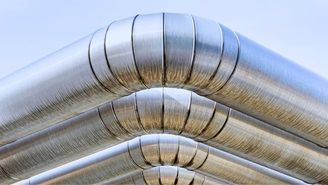In December 2018, an investor trip was organised to see the operations of Vedanta’s Konkola Copper Mines (KCM) and Glencore’s Mopani Copper Mines (MCM) located in the Copperbelt of Zambia. We’ve been engaging with Vedanta and Glencore for several years as the companies have experienced several ESG issues in their histories. As part of our engagement process, we conduct in-person visits to gain a better understanding of what’s happening on the ground. During this trip we saw how investment can extend the life of mines and continue to support the local communities. In this article I’ll discuss the importance of stakeholder and government relations as these companies make major investments to improve and extend their operations in the country.
Zambia’s Mining Legacy:
The Importance of Stakeholder Relations
Mining companies are often seen to be extracting a country’s raw materials to the detriment of both local communities and the host nation. However, the companies are very much at the mercy of the country and the locality in which they work. Unlike a tech company or a financial institution, a mining company cannot simply close an unprofitable office and re-open it where they like. A mine is an asset that is geographically fixed to where the ore bodies are extractable. Investment cannot be undertaken lightly, so when a company invests billions in an operation, in addition to financial due diligence, it must take account of the political stability of the country. It is therefore imperative that the operator builds a constructive relationship with the government and the local community.
Mining on the Copperbelt of Zambia dates back to the 1930s. The 1970s was a period of consolidation and nationalisation in Zambia’s mining industry with Zambia Consolidated Copper Mines (ZCCM) owning 60 per cent of each operational mine. Environmental controls were not advanced at the time and in many instances the waste tailings from the extraction process were generally deposited with little control. This led to several issues with polluted water and detrimentally affected agricultural land. In 1998, the nationalised operations were split into seven and privatised (including KCM and MCM) over the next few years; with the companies often inheriting numerous legacy issues.
Investments Pay Off at Konkola Copper Mines
One of the biggest facts of life for mining companies is that their assets are fixed geographically. At the time of privatisation for both KCM and MCM, the end of life of their mines was between 2025 and 2028. Both companies have invested to extend the life of their mines by 25 years or more, thus it pays for them to think long term about their operations and their relationships to the local community.
In December 2017, Vedanta announced USD 1 billion in investments at KCM which included: USD100 million into primary development and equipment at the Konkola Deep Mine; USD300 million for accelerated development and infrastructure at Konkola Mine, including a dry mine plan; and another USD600 million to set up a new copper refinery at Nchanga in Chingola, a cobalt processing plant, a mine training academy at Konkola and a captive power plant. The investments were estimated to prolong the life of mine from 2025 to at least 2050 and potentially create an additional 12,000 jobs.
Almost a year after the announcement, we were on site looking at how these investments are taking shape. KCM’s Konkola Deep Shaft (Shaft no.4) is often cited as the wettest mine in Zambia, meaning dewatering is a major factor in keeping the mine operational. The Konkola Deep Shaft extends to a depth of approximately 1,500 m and includes three new ventilation shafts, a new dewatering shaft and a new pump chamber.
The new pump chamber currently removes some 375,000 cu.m of water a day. The water goes through settling and sedimentation prior to disposal into the Kafue River where it provides a constant baseflow year-round and throughout the dry season. KCM aims to develop an irrigation system down river enabling farmers to benefit from the constant baseflow created by the dewatering works.
KCM has also improved its tailings management, with higher dams, new spillways and a replacement tailings pipe. It is addressing the ongoing concerns relating to inherited legacy issues, such as alleged polluted water and impacted agricultural land, with several environmental and social programmes.
Mopani Copper Mines Invests for the Future
On first appearance many of the older facilities at MCM appear to be in far worse condition than those at KCM. But appearances can be deceptive.
The company has implemented a continual improvement process to update these facilities, with new acid plants leading to improved SO2 emissions, and expanded copper refining, resulting in a far superior copper product. Meanwhile, much of the old unused infrastructure, roads and buildings, are being removed and the debris processed for copper extraction.
But the big investment at Mopani is in the three new shafts – the Synclinorium and Mindolo deep shafts in Kitwe and the most advanced, the Mulufira deep shaft – totalling USD 1.3 billion. Once finished, these three shafts will extend the life of the mine by a further 25 to 30 years.
Investment at MCM goes hand in hand with safety. Safety is seen everywhere in the form of improved procedures, visual reporting of current safety conditions and alcohol breathalysers. MCM has also built a new USD 21 million training facility which tries to replicate the underground environment at the surface.
Government Impacts
With assets that are fixed and that cannot be relocated, mining companies are at the mercy of the government. In September 2018, the Zambian government announced plans to raise royalties by between 1.5 and 3.0 per cent with a 10 per cent charge if the copper price rises above USD 7,500 per metric tonne. This is reportedly the tenth tax change since 2002. The companies are negotiating with the government, but the Zambian Chamber of Mines estimates 21,000 job could be lost and that companies could scale back their investments in mines by some USD 500 million over the next few years, with associated impacts on the prosperity of the local communities.
The relationship between the companies and the communities, and their programmes to overcome and remediate legacy issues is the focus of a Sustainalytics webinar on Tuesday, 5th February 2019 where we will discuss in more detail the social and environmental programmes undertaken by both KCM and MCM. To register for the webinar, please click here.
Learn more about Sustainalytics’ Engagement Services and our Country Risk Research and Ratings.
Recent Content
DEI Rollbacks: Impact on ESG Risk Ratings and Broader Implications for Investors
This article covers how not all reported rollbacks in diversity, equity, and inclusion (DEI) initiatives will have the same impact. Due to the relatively low weight of DEI in Sustainalytics’ ESG Risk Rating, we do not anticipate significant changes to overall ratings.
Industrial-Scale Decarbonization in the EU: Stewardship Field Notes From Germany, France and Spain
This article covers how Morningstar Sustainalytics’ Stewardship Team embarked on a field trip in November 2024 to learn how EU industry leaders are navigating the complex challenges of the energy transition.






